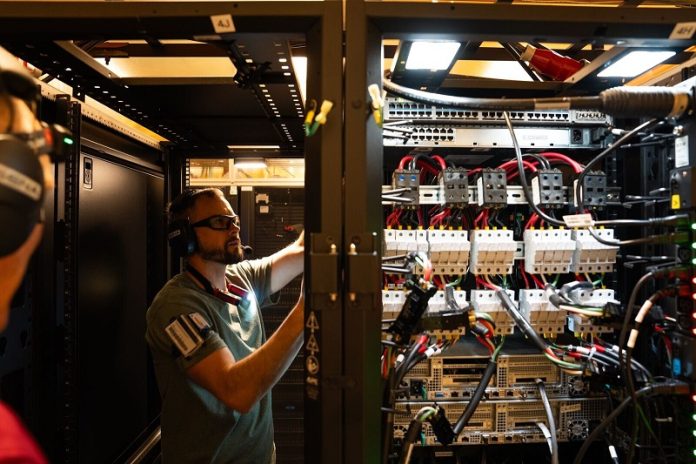
The future of scientific computing may depend not just on faster processors, but on bigger, smarter memory systems.
That’s the idea behind a new computer prototype called Crete, developed by researchers at the Department of Energy’s Pacific Northwest National Laboratory (PNNL) in partnership with Micron.
Crete is unlike most computers in the world today. Instead of focusing mainly on speed, it has been designed to handle vast amounts of memory—15 terabytes, all directly connected to its processors.
That’s the equivalent of about 240 high-end laptops, each with 64 gigabytes of memory, all working together in real time. This unique design makes Crete one of the only systems of its kind, not just at DOE laboratories but across the high-performance computing community worldwide.
The system officially came online on August 12, 2025, and is now available through the Advanced Memory to Support Artificial Intelligence for Science (AMAIS) initiative. Researchers from national laboratories and universities can apply to use it for memory-hungry projects that ordinary computers can’t handle.
“Many scientific applications today are limited not by processor speed, but by memory,” explained Andrés Márquez, lead of the AMAIS initiative at PNNL. “Crete is designed to overcome those bottlenecks and give researchers the memory space they need.”
At the heart of Crete is a new way of linking processors and memory, using Compute Express Link (CXL)—an open industry standard that allows processors to talk directly to memory through a specialized switch built by XConn Technologies.
The system cleverly blends two types of memory setups: traditional “tightly coupled” memory that is directly tied to processors, and “loosely coupled” memory connected via custom CXL controller boards. Together, they create a flexible platform that can handle massive datasets more efficiently than existing architectures.
The potential applications are wide-ranging. Chemistry simulations, molecular modeling, and advanced materials research are first in line to benefit, especially when combined with AI tools. For example, Crete could allow generative AI algorithms to analyze huge chemical datasets, predict new molecules, and suggest promising research paths—something not possible with standard computing systems.
“Think of Crete as a chat room where large databases and AI models can exchange information instantly,” said Márquez.
Micron’s Mark Helm, who helped design the system, sees it as a turning point. “The Crete system represents a bold leap forward in redefining how memory and compute can work together to unlock scientific discovery,” he said.
Security has also been built into the system from the ground up. Because memory is often a weak spot for cyberattacks, the design team made cybersecurity protections a central focus early in development.
Looking ahead, Crete is seen as a bridge to the exascale era—the next generation of supercomputers capable of performing a billion billion calculations per second. PNNL researchers are already testing chemistry applications like ExaChem on Crete to prepare for future DOE flagship machines.
James Ang, PNNL’s chief scientist for computing, summed it up: “For decades, we’ve focused on processor-driven systems. But some scientific problems require enormous, directly accessible memory. Crete is the first step toward solving those challenges and accelerating discoveries in AI, chemistry, and beyond.”
With its launch, Crete opens the door to a new class of memory-rich computing, giving scientists and engineers the tools to push deeper into data-intensive discovery.
Source: Pacific Northwest National Laboratory.



